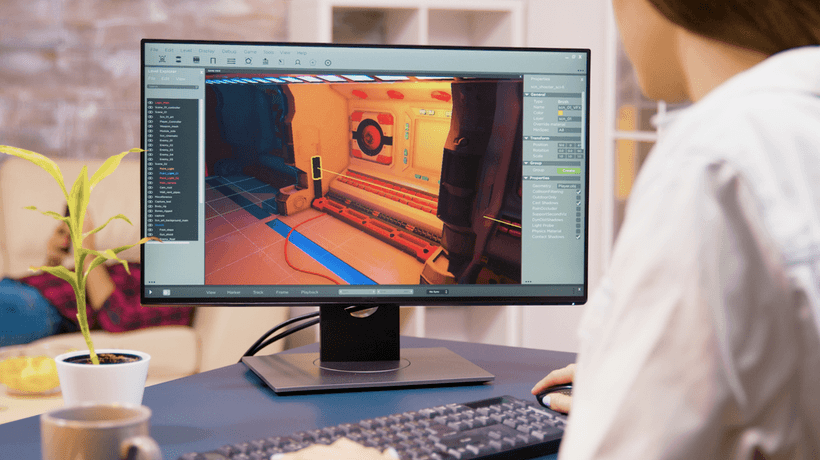
Animation For Corporate Training
In the past, when we talked about animation, we were thinking of hand-drawn cartoons; the type you see in graphic novels, manga, and comic strips. (This type of animation goes all the way back to the 1930s, with characters like Bugs, Daffy, Jerry, and Tom.) Modern eLearning animation is more likely to be computer-generated and has a whole different feel. Not to mention, you no longer have to have graphic design experience, thanks to user-friendly animated authoring tools. So how can you use this for corporate training to improve engagement and memory retention?
1. Task Demos For Risky Processes
CGI animation has a different visual effect compared to traditional hand drawings. It is also faster and cheaper to produce. You could make a feature-length animated exercise (in theory, because you do have the tools for it). But it’s best to keep things short and sweet. Limit yourself to animated sequences of two to ten minutes. It can demonstrate the right/wrong steps for a particular action. This can be helpful for visual learners. But even for those who prefer to learn by text, animated videos can make a good JIT refresher. Examples of animated demos include safety tips, evacuation drills, or machine operating procedures. You don’t want to risk the well-being of a live actor to reenact a hazardous spill or fire evacuation protocol. But an animated character is more than happy to step in and play the part.
2. Serious Games With Real-World Experience
Animations are most frequently associated with video games. It could even be a role-player system (RPG) that immerses a player in a fantasy-inspired world. But training games aren’t just for entertainment and leisure. Serious games have a specific (corporate) goal. For example, you might play a treasure hunt to help develop observation skills. Or maybe you could pose a work-related challenge and start the clock to train your staff to work under pressure. Realistic settings are more direct, so use reproductions or 360º videos of your office as gaming backgrounds if you can.
3. Corporate Unboxing Tasks
On YouTube, these are often user-generated, and may or may not be sponsored. Their primary function is customer education, though they’re also a useful product knowledge tool. They can be helpful both for sales teams and regular employees. In fact, they’re even more beneficial to non-sales-staff, who may be asked about a product at a social gathering. For unboxing, realism is key, so rather than cartoonish visuals, try doing a stop-motion video. It’s based on the same principle that guides cartoons. You take a series of sequential photos, then loop them at high speed to create the illusion of (video) movement. All you need is a solid storyboard, effective lighting, a high-res camera, and a really good video/audio editor.
4. Career Path Trajectories
Bosses might assume the main reason their employees quit is money. But sometimes, the raise isn’t about dollars and cents. It’s more about growth and achievement. They need to feel they’re progressing in life and at work. But they don’t always know what their options are. Create animated organizational charts. Show them their current position, those above them, and those below them, including titles and job descriptions. You can even incorporate training recommendations. For example, a particular certification course can help prepare them for the next run on the corporate ladder. At a glance, they can review their own scope for movement. Some of the more enterprising employees can even see where they can create a new job position for themselves.
5. Performance Reflection Demos
Animations might be on the lighter side, but they can still prompt employees to reflect on their own performance behaviors, as well as identify areas for improvement. Develop animated online training reflection demos that feature correct/incorrect examples. For instance, how to (or not to) handle a customer return or COI bribe scenario. Then, ask employees to pause the video and think about how they might handle the situation. What would they do differently? Do they feel the animated character handled themselves according to company policy? When they replay the demo, proper behaviors are revealed and they can see how they fared. You can even follow up with targeted recommendations to help them remedy issues they discovered during the activity.
6. Light But Helpful How-To’s
Corporate training doesn’t have to be directly… corporate. There are lots of life skills you can pick up at work. Say, for example, staff members have been invited to an executive dinner or a big client meeting. They can probably benefit from a quick animation on social graces and how to deal with common obstacles, how to pick the right outfit for an event, how to start, continue, and exit a conversation gracefully, how to mingle, network, and be memorable (even while you’re a nervous wreck). These may seem like minor elements, but they can help trainees prepare for every eventuality and put their best foot forward.
Conclusion
While animations aren’t suitable for every scenario, they are definitely versatile. And they are fun too. So what activities can you include in your corporate training to inspire and amaze your learners? Demonstrate risky tasks in light, playful, but meaningful ways. Incorporate serious games based on mundane workplace duties. You could go a little unorthodox with stop-motion unboxing videos or interactive organizational charts. Finally, offer some animated tips on soft skills, like how to win over clients during social events, seminars, and gatherings.
Animated authoring tools feature templates, characters, and other key resources to help you create memorable training tools. Our online directory features the top eLearning animation tools on the market. You can select your use case, spec support, deployment type, and pricing model to find the software that’s just right for your online training program.
